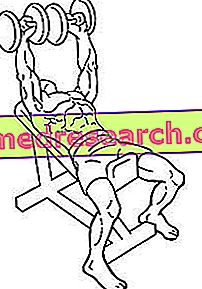The Personal Trainer at home is increasingly in demand, especially in large cities, for reasons mainly related to two factors:
- Time available: Many people no longer have time to go to the gym: work and / or family commitments, traffic in big cities, the unexpected make it difficult to attend the gym consistently.

- Atmosphere: The chaotic and impersonal environment of some fitness centers can discourage and make the training experience unpleasant, sometimes causing an early abandonment of the sporting activity in progress. This problem is experienced above all by the "neophytes", that is those who approach training for the first time or have never done it consistently. Having an unpleasant first experience in a place where it seems that everyone else is at ease and, in some cases, where you do not get the right start-up from qualified personnel, has a strong negative impact on motivation and the desire to return to that place. In these cases the Personal Trainer at home can help to create a pleasant training experience, which represents the first step to establish a new habit linked to exercise and oriented to physical well-being.
Can training at home be as effective as training in the gym?
To make an effective workout, be it at home, in the gym or in any other place, you need to respect some rules of the training methodology and apply them in the context in which you find yourself.
But what are these rules? There are many, but the most important ones are about training at home:
- Intensity of training to tone: To tone your muscles, you should prefer intensity to volume, where intensity means training load and training volume amount. A high intensity and low volume exercise rather than a high volume and low intensity exercise will always be more effective for muscle toning. To make the concept easier, squats or dumbbell lunges are examples of high intensity and low volume exercises, a step course or a slow run of forty minutes on the treadmill are examples of high volume and low intensity activities. So it's enough to have some home fitness tools - like a pair of modular dumbbells, cast-iron discs, a fitball and a mat - to create the right conditions to respect this rule. It is not true that fitness courses and gym equipment make the workouts more effective than those at home, as it is not true that to get results by training at home you just need a mat and two small bottles of water!
- Right balance between volume and intensity to lose weight: To lose weight, you need to set your workout so that there is the right balance between volume and intensity. High volume exercises, low intensity and long duration, such as a brisk walk on the treadmill, stimulate the metabolism of fats to obtain the energy needed for physical activity. High-intensity workouts such as the circuits or the type of exercises described in the previous paragraph stimulate, in addition to the musculature, an acceleration of the metabolism in the hours following the training. So to lose weight and maintain toned muscles, both aspects must be taken care of.
If you don't have a treadmill or an exercise bike, you can safely go for a walk outside the home or to the park.
- Continuity and progressiveness: constant training and progressive training loads are fundamental principles for achieving tangible results. If you decide to train 2 or 3 times a week, it is important to respect this weekly frequency and not skip training sessions, as it is important that the training loads, the number of repetitions and the series, the recoveries, the type of exercises and the general training load is of progressive intensity to stimulate continuous improvements. These principles or rules can be easily respected even by training at home, if you have a minimum of equipment and the right indications provided by the Personal Trainer.
- Individualization: It is perhaps the most important rule: there is no training method that works for everyone, so it is always better to prefer a Personal Trainer rather than relying on generic training cards on the web or video fitness courses at home.
How to choose a Personal Trainer at home
Training with a Personal Trainer at home means choosing effectiveness and comfort.
Therefore, in choosing the professional, these aspects must be considered:
- Training: First of all, the professional training of the Personal Trainer must be evaluated: make sure that he has a degree in Sports Science or is certified by the main sports federations or training companies recognized by CONI.
- Experience: In addition to training, there is also the experience, understood as the set of years of work, the number of people trained and their satisfaction: I recommend asking the Personal Trainer curriculum and customer references.
- Availability and flexibility: The home service is designed to be comfortable for the customer, therefore the Personal Trainer must be available to meet the customer's time slots and days.
- Available equipment: As stated above, a mat is not enough to make an in-home training effective, so make sure the Personal Trainer has a set of materials for home training, such as modular dumbbells, cast iron discs, kettlebells and trx, as well as tools for the initial assessment of body composition such as a skinfold and / or an impedance meter.




